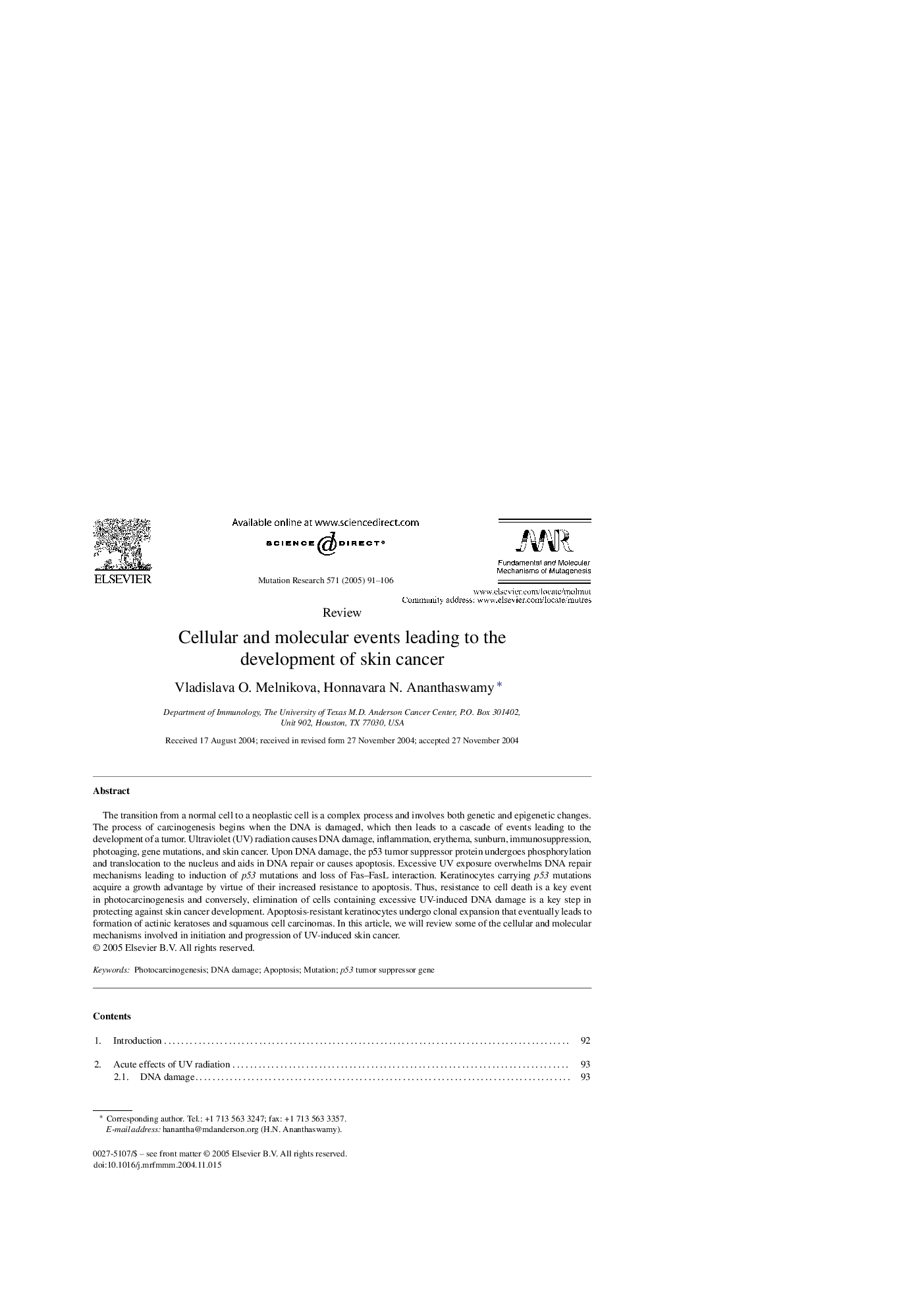| کد مقاله | کد نشریه | سال انتشار | مقاله انگلیسی | نسخه تمام متن |
|---|---|---|---|---|
| 9909155 | 1548437 | 2005 | 16 صفحه PDF | دانلود رایگان |
عنوان انگلیسی مقاله ISI
Cellular and molecular events leading to the development of skin cancer
دانلود مقاله + سفارش ترجمه
دانلود مقاله ISI انگلیسی
رایگان برای ایرانیان
کلمات کلیدی
موضوعات مرتبط
علوم زیستی و بیوفناوری
بیوشیمی، ژنتیک و زیست شناسی مولکولی
تحقیقات سرطان
پیش نمایش صفحه اول مقاله

چکیده انگلیسی
The transition from a normal cell to a neoplastic cell is a complex process and involves both genetic and epigenetic changes. The process of carcinogenesis begins when the DNA is damaged, which then leads to a cascade of events leading to the development of a tumor. Ultraviolet (UV) radiation causes DNA damage, inflammation, erythema, sunburn, immunosuppression, photoaging, gene mutations, and skin cancer. Upon DNA damage, the p53 tumor suppressor protein undergoes phosphorylation and translocation to the nucleus and aids in DNA repair or causes apoptosis. Excessive UV exposure overwhelms DNA repair mechanisms leading to induction of p53 mutations and loss of Fas-FasL interaction. Keratinocytes carrying p53 mutations acquire a growth advantage by virtue of their increased resistance to apoptosis. Thus, resistance to cell death is a key event in photocarcinogenesis and conversely, elimination of cells containing excessive UV-induced DNA damage is a key step in protecting against skin cancer development. Apoptosis-resistant keratinocytes undergo clonal expansion that eventually leads to formation of actinic keratoses and squamous cell carcinomas. In this article, we will review some of the cellular and molecular mechanisms involved in initiation and progression of UV-induced skin cancer.
ناشر
Database: Elsevier - ScienceDirect (ساینس دایرکت)
Journal: Mutation Research/Fundamental and Molecular Mechanisms of Mutagenesis - Volume 571, Issues 1â2, 1 April 2005, Pages 91-106
Journal: Mutation Research/Fundamental and Molecular Mechanisms of Mutagenesis - Volume 571, Issues 1â2, 1 April 2005, Pages 91-106
نویسندگان
Vladislava O. Melnikova, Honnavara N. Ananthaswamy,